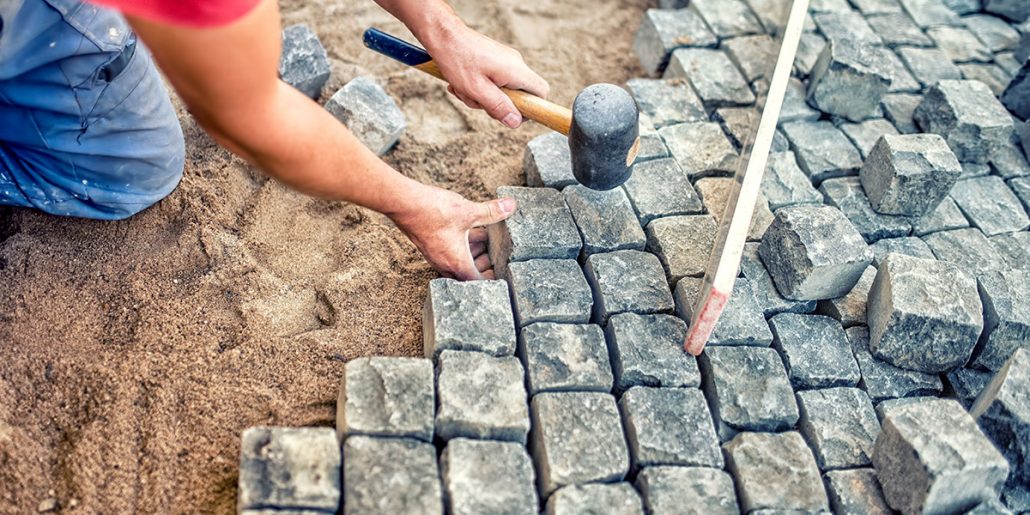Expert Step Repair Services: Make Certain Safety And Security and Sturdiness
Expert Step Repair Services: Make Certain Safety And Security and Sturdiness
Blog Article
Opening the Tricks of Sustainable Stonework Construction Practices for Eco-Friendly Buildings
Among the myriad strategies to environment-friendly structure, sustainable stonework building and construction stands out as a tried and true and long lasting approach that holds a wealth of untapped potential. From the choice of materials to ingenious building techniques, the keys to achieving sustainability within stonework construction are diverse and fascinating.
Advantages of Lasting Stonework Construction
Accepting lasting stonework building and construction methods not only minimizes environmental effect yet also supplies long-term economic advantages to contractors and areas. By making use of products like recycled blocks, obstructs, and stones, home builders can substantially reduce the carbon footprint of their projects while advertising source performance. Additionally, sustainable masonry construction techniques, such as proper insulation and thermal mass residential or commercial properties, can improve power efficiency within buildings, resulting in lowered functional prices over time.
Furthermore, the longevity and strength of masonry structures add to long-lasting economic advantages. Buildings created using lasting masonry practices usually call for less upkeep and repair work, converting to set you back financial savings for builders and homeowner. The durability of stonework products likewise makes certain that structures stay stable and safe and secure, reducing the demand for frequent renovations or replacements.
Eco-Friendly Masonry Materials
Making use of eco-friendly stonework materials is a critical step towards boosting the sustainability of building and construction techniques and reducing ecological effect while making best use of long-lasting economic advantages. Lasting stonework products are sourced, generated, and made use of in a manner that minimizes total ecological impact. Sustainable concrete obstructs integrate recycled aggregates and may include enhanced insulation residential properties, contributing to energy effectiveness in buildings.
Moreover, all-natural products like adobe, rammed earth, and straw bundles give outstanding thermal mass residential or commercial properties, lowering the requirement for home heating and cooling down power. These materials are frequently locally available, promoting local economic situations and minimizing transportation-related carbon exhausts. By selecting environment-friendly stonework materials, building and construction jobs can dramatically minimize their ecological footprint and contribute to the creation of healthier, more sustainable developed environments.
Energy-Efficient Stonework Methods
Energy performance plays an essential duty in enhancing the sustainability of stonework building techniques. One essential energy-efficient masonry technique is the use of thermal mass, which entails integrating dense products like concrete or block into the structure's framework to soak up and store warmth.

Advancements in Lasting Masonry
Recent improvements in sustainable masonry practices have actually brought about cutting-edge techniques that are improving the construction market. One such innovation is the growth of self-healing concrete, which makes use of garage foundation design germs embedded within the concrete to recover splits autonomously. This advancement not just lowers upkeep costs but additionally enhances the toughness of stonework structures, contributing to their sustainability.
Another significant development is the use of recycled aggregates in stonework building - masonry contractor. By incorporating materials such as smashed ceramic waste or recycled glass right into concrete blends, builders can decrease the ecological impact of construction tasks while keeping architectural stability. This practice not only draws away waste from land fills yet likewise preserves natural resources, making it a crucial advancement in lasting masonry building
In addition, the combination of electronic design tools, such as Building Information Modeling (BIM), is revolutionizing the means masonry structures are intended and constructed. BIM enables more specific estimations, minimized material wastefulness, and enhanced power efficiency, eventually causing more sustainable building practices. These technologies jointly indicate a promising future for lasting stonework building and construction in the age of green structures.
Future Trends in Masonry Sustainability
With the cutting-edge strides made in sustainable stonework techniques, the future patterns in masonry sustainability are positioned to additional transform the building industry. One of the crucial trends shaping the future of stonework sustainability is the boosted assimilation of innovation. Improvements such as Building Info Modeling (BIM) and digital reality simulations are being utilized to optimize masonry building procedures, causing reduced product waste and enhanced power efficiency in structures.
In addition, the advancement of novel sustainable materials is readied to play a substantial role in enhancing the eco-friendliness of masonry construction. masonry contractor. Developments like self-healing concrete, recycled accumulations, and bio-based binders are getting traction for their ability to decrease ecological impact while keeping architectural honesty

Conclusion
Finally, sustainable masonry building and construction techniques offer many advantages for environmentally friendly structures. By using eco-friendly products and energy-efficient techniques, why not try here stonework can add to an extra lasting developed environment. Technologies in lasting masonry are continually being established to further enhance the ecological performance of buildings. Looking in the direction of the future, the trend of masonry sustainability is anticipated to expand, resulting in even more eco-friendly and energy-efficient construction practices in the years to find.
Report this page